STEPPING through a dark entrance, visitors may feel a moment of disorientation before emerging into A Sojourn through the Stars and Seas, an installation inspired by the legendary voyages of Admiral Zheng He by Johor-born Singaporean artist Tan Kwank Liang.
Tan, who has spent some 23 years as a professional artist in China, was commissioned to create the installation for the Commonwealth of World Chinatowns (CWC) Conference 2025, recently hosted in Penang.
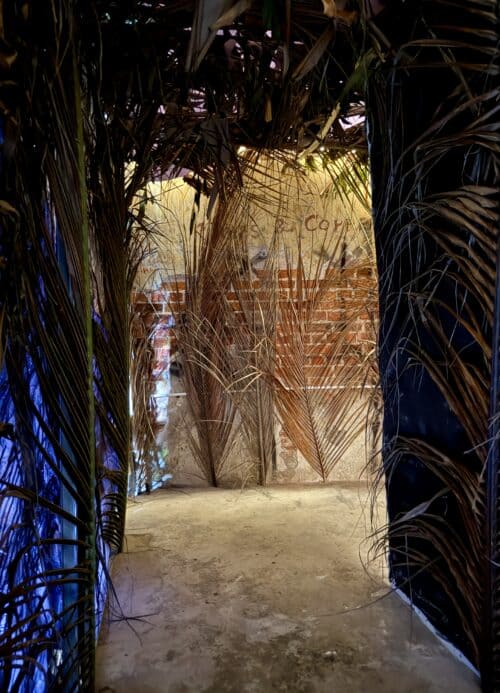
From the dimly lit entryway, visitors are transported into a sea-like setting. Fishermen’s worn-out ropes, seashells, and rocks are scattered near the “shore,” while a shallow layer of water — just a few inches deep — covers the entire exhibition floor. A small wooden bridge completes the illusion of a seaside village.
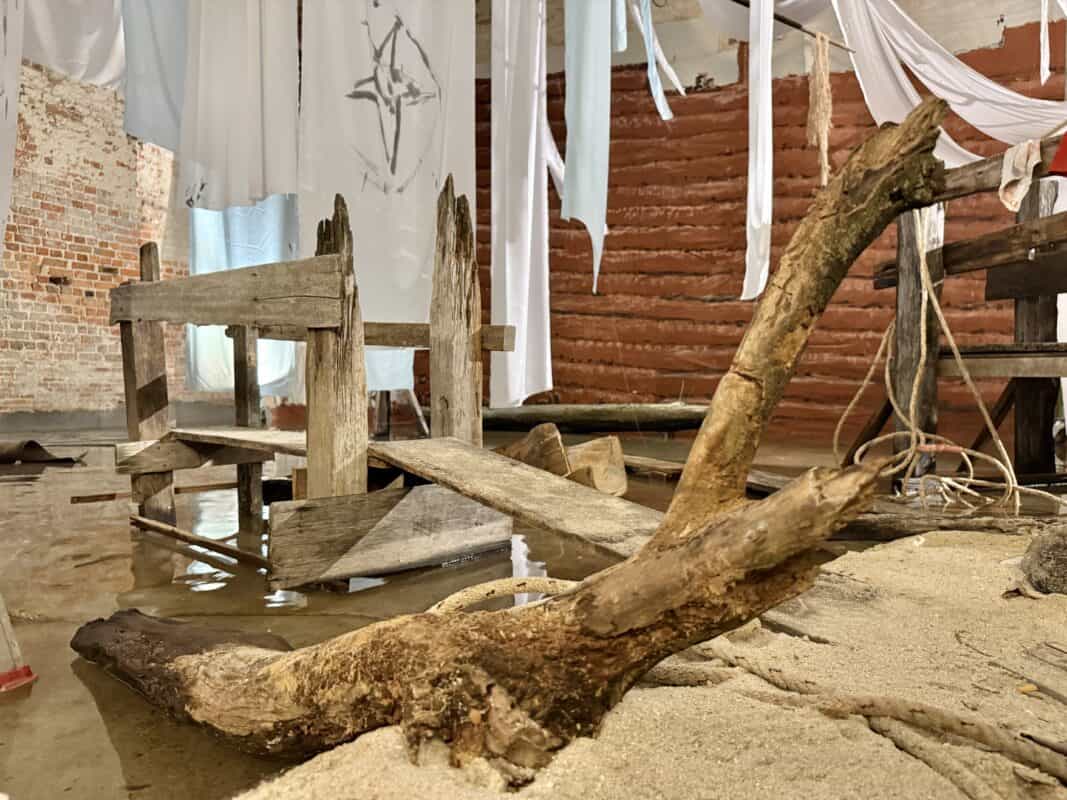
The most striking feature is several sheets of white cloth, measuring 3x1m, 4x1m and 5x1m, suspended from the rafters and swaying like sails caught in an invisible breeze from a fan.
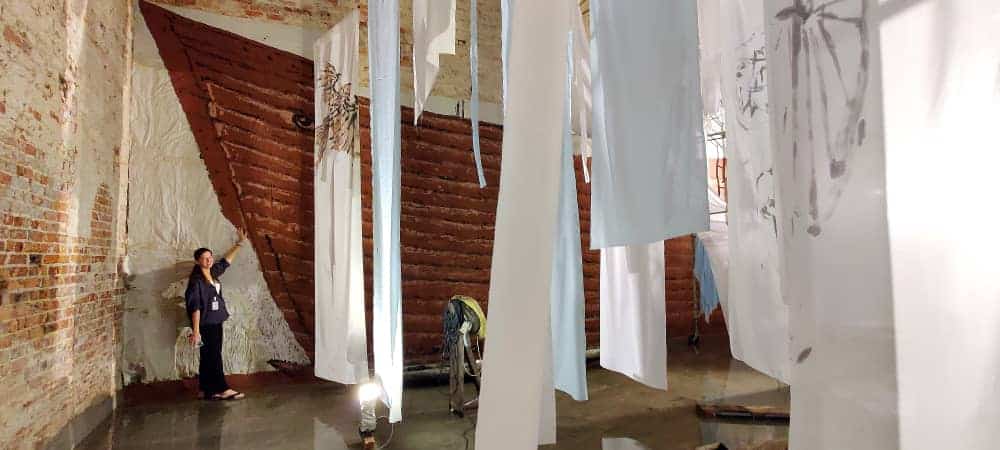
Forming the backdrop is a large paper painting of a Chinese junk pasted against a brick wall, depicting the type of vessel used by Admiral Zheng He on his historic voyages. Beside it sits a wooden sampan with several white ceramic plates, symbolising the cargo unloaded from the junk.
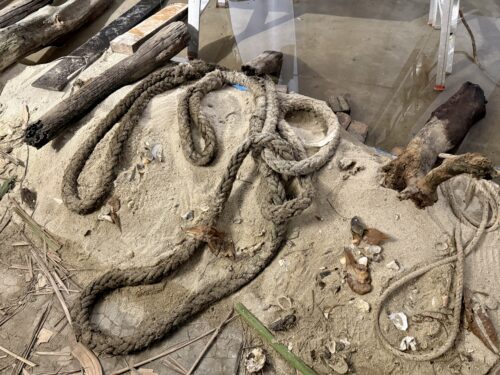

Asked why he embarked on this project, Tan said he was thrilled when invited by Lee Khai, the co-founder of The Commonwealth of World Chinatowns.
“As an artist, I always love challenges. I knew it was going to be a very difficult project, but I was willing to take it up. Since the congress’s theme centred on Admiral Zheng He, it reminded me of a book by Gavin Menzies entitled 1434. It mentioned a Chinese delegation led by Zheng He reaching Italy at that time.
“Around 1434, a spark arrived from the East. This could have sparked the Renaissance. I was surprised to learn that Zheng He had gone to Italy and possibly influenced the Renaissance,” Tan told Buletin Mutiara in a recent interview.
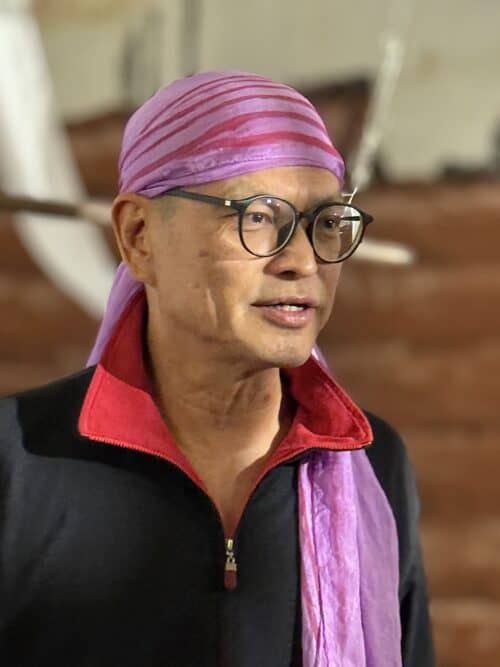
He further noted that since the Renaissance, Western powers such as Spain, Portugal, France, Britain, and later the United States have dominated world history and shaped global storytelling.
“Few realise that before them, Zheng He had already sailed to many parts of the world, including South America and Africa. Why is such history so little known? That’s something worth reflecting on,” he said.
Tan emphasised that many school textbooks studied today are written from a Western perspective, making CWC’s call for the East to establish its own narratives all the more necessary.
“What we are taught in school and see happening in many fields are Western concepts and philosophies. The idea of CWC is that we should also embrace and promote our own Eastern, or Oriental, narratives,” he said.

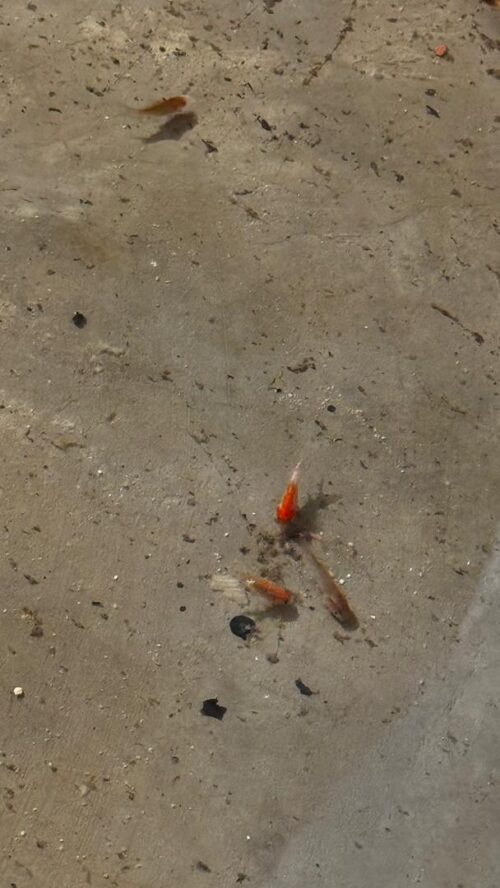
Interviewing Tan was itself part of the installation experience. He invited my colleague, Joanne Foong, and me to remove our shoes and step into the shallow water, where stools had been placed within the setting.
A small pot of Chinese tea and a plate of tau sar piah biscuits were already placed on a smaller stool for us as he spoke about his inspirations. At one point, we were surprised that small fish even swam near our legs. When the unique interview ended, Tan thoughtfully provided a small cloth for us to wipe off the sand — a gesture that reflected both the immersive nature of his work and his personal warmth.
Tan, who has widely travelled, including to America and Europe, and authored four books, noted that installation art is still relatively new here and encouraged the public to have an “open mind” when visiting, seeing and experiencing how art connects with everyday life.
Using space as a medium, installation art often transforms a room, gallery, or outdoor site into an immersive environment — unlike a painting or sculpture that exists as an object to be looked at.

Lee Khai said Tan’s work aligns with one of the objectives of the CWC conference: driving its own narratives.
“We invited speakers from the UK and China to talk about ancient explorations of the Earth, where Admiral Zheng He led the way. It is said that the Chinese knowledge brought by Zheng He to Europe sparked the Renaissance. The arts are useful in bringing people of different interests together,” he said.
CWC, he added, is a platform inspired by the historical ties between the Chinatowns of Penang and Singapore, seeking to explore their connections with China, Asia and the wider world.
“Its goal is to develop initiatives through a global network of Chinatowns and beyond, fostering multiethnic and intercultural learning while expanding the frontiers of human knowledge,” he said.
During the inaugural conference, CWC curated two other cultural and artistic highlights – Dinner with Emily (where Stella Kon reimagined her famous Emily of Emerald Hill into a dinner-theatre musical), and a Silent Art Auction featuring works by 40 artists to raise funds for the Penang Art District.
A Sojourn through the Stars and Seas runs until Sept 30 at The Courtyard Beach Street 1786 in George Town, from 5pm to 10pm daily.
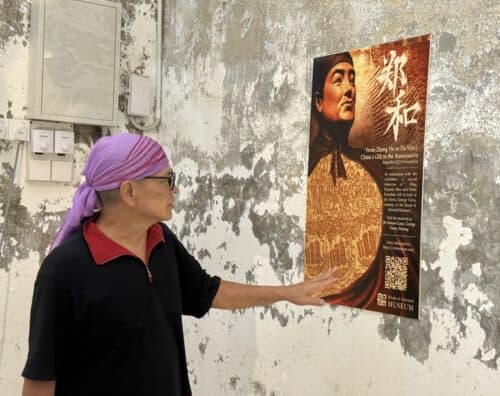
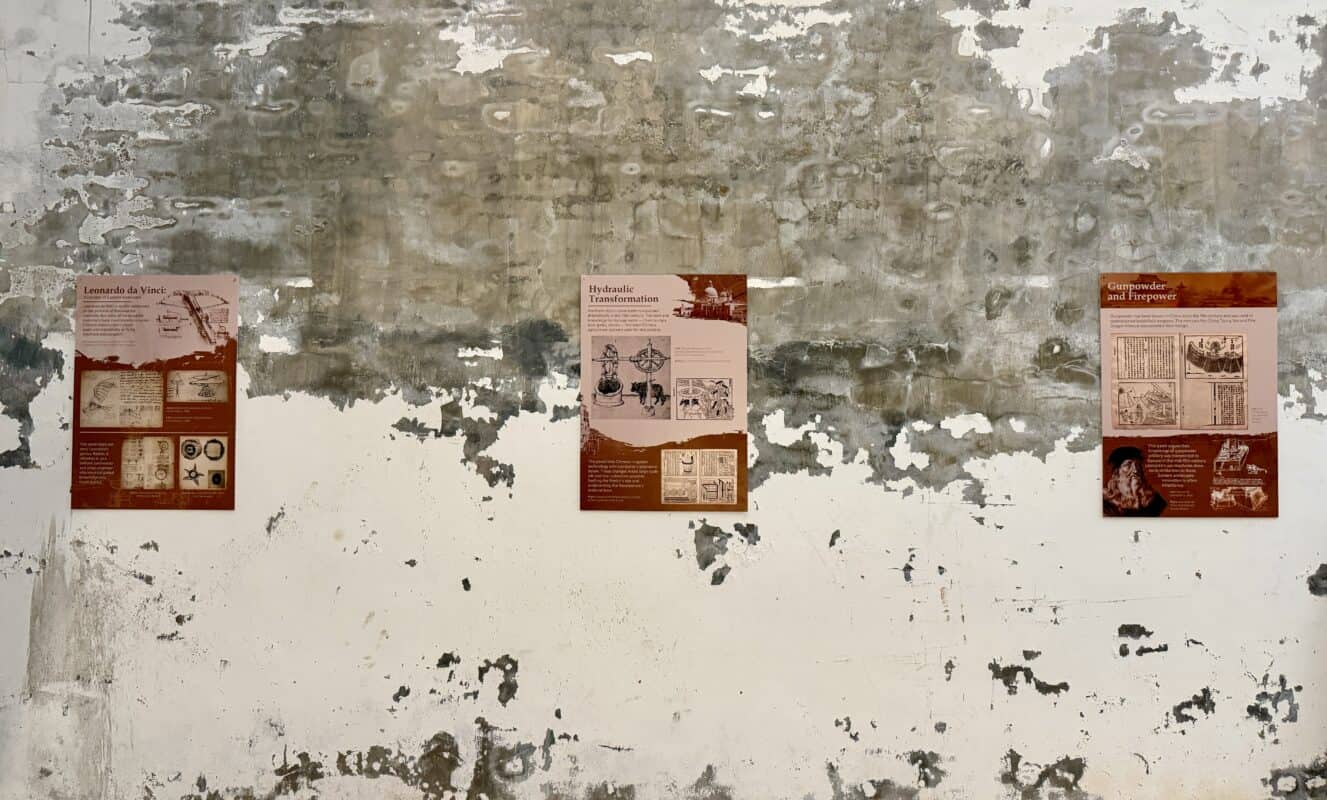
Opposite the building is another exhibition venue where a series of interpretive panels are mounted along the walls, each combining portraits, diagrams, and explanatory text to illuminate the theme Zheng He and Da Vinci Juxtaposed.
More than just an installation, Tan’s work invites all — whether art enthusiasts or casual visitors — to step in, reflect, and discover their own meaning.
Story by K.H. Ong
Pix by Alissala Thian

